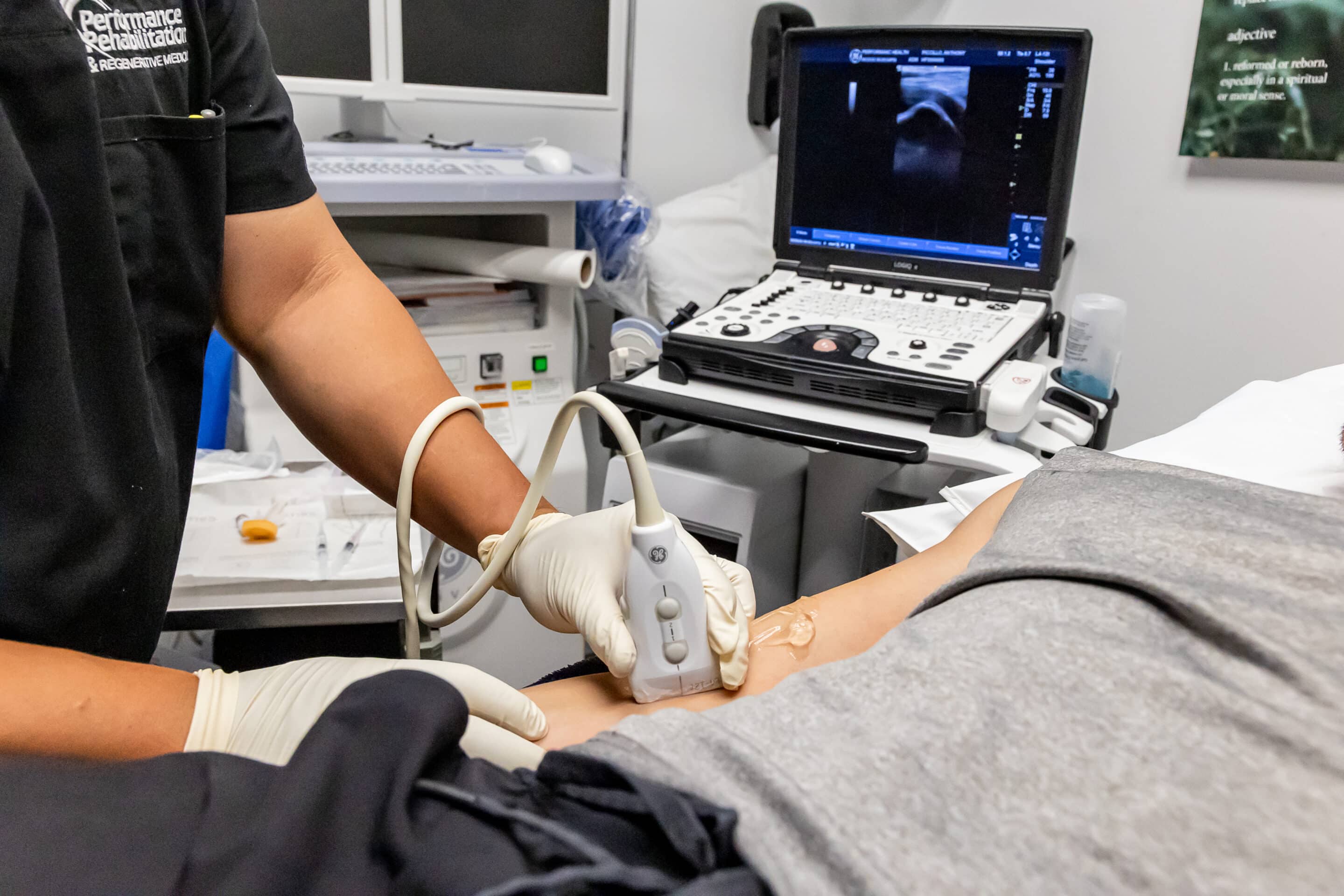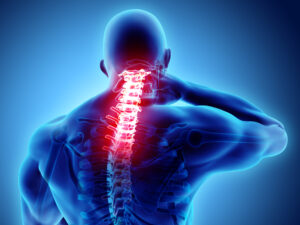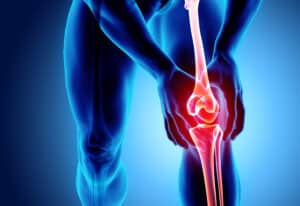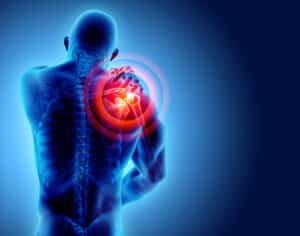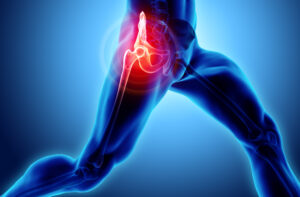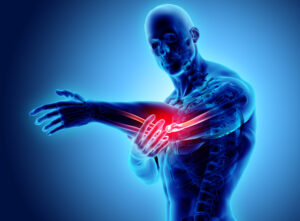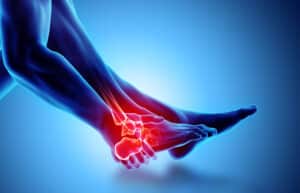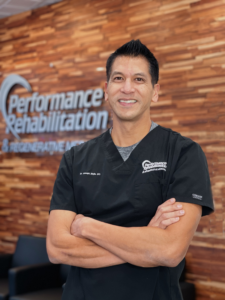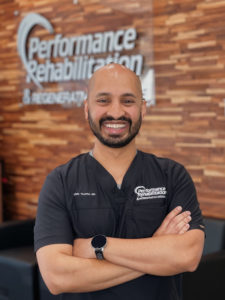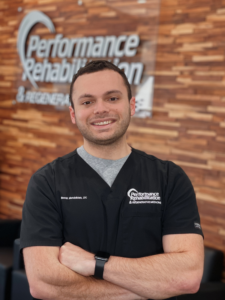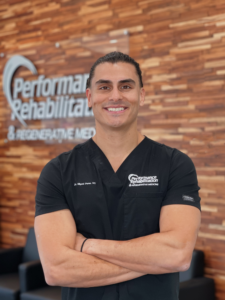Sciatica and Spinal Stenosis
Sciatica is commonly caused by spinal stenosis, a condition that occurs when the small spinal canal, which houses the nerve roots and spinal cord, becomes compressed. As a result, there is a pinching of the nerve roots or spinal cord, which leads to pain, numbness, or weakness that can be felt in the lower back, legs, arms, shoulder or neck.
What is spinal stenosis?
Spinal stenosis typically occurs in the lower back and neck. There is a narrowing of the space within your spine, which puts pressure on the surrounding spinal nerves. Resulting sciatica can range anywhere from symptom-free to pain, muscle numbness, and tingling.
The two main types of stenosis of the spine are cervical stenosis and lumbar spinal stenosis. In cervical stenosis, the narrowing takes place in the neck area, while lumbar spinal stenosis creates a narrowing in the lower back area. Lumbar spinal stenosis is the most common form of spinal stenosis.
What are the causes and risk factors of spinal stenosis?
Spinal stenosis can be caused by a small spinal canal that is present at birth, but most often the narrowing of the spine is caused by degenerative changes related to age. The majority of people affected by spinal stenosis are over the age of 50. There is an increased risk if you’ve had previous trauma or surgery on the spine. Some other causes to consider are:
- Herniated disk
- Bone tumors
- Spinal injury
- Scoliosis
- Paget’s disease
What are the symptoms of spinal stenosis?
Sciatica from spinal stenosis can have a multitude of symptoms. Symptoms can vary depending on the location and nerves which are affected. A thorough medical history and physical exam will likely be required for a diagnosis. Some symptoms your treatment provider may look for include:
- Sharp pain that radiates down the leg while walking or standing for long periods of time.
- The pain subsides when sitting down or leaning forward
- Numbness, cramping, weakness, or pain in the legs or feet
- Back, neck, or spine pain
- Walking and balance problems
- Abnormal bowel and bladder function (severe cases)
What are the treatments for spinal stenosis?
Exercise is of paramount importance in the treatment of spinal stenosis. By doing exercises regularly that strengthen muscles and improve flexibility, pain is reduced and overall wellbeing is increased. Exercise is especially helpful in the case of lumbar spinal stenosis, but sometimes another medical intervention by a physical therapist or spine physician is required.
Spinal stenosis exercises
Bending the lower spine forward opens up the narrow spaces where the nerve exits the spine, which allows nerve irritation and pinching to resolve. Patients with spinal stenosis typically feel better when leaning forward on a walker, shopping cart, or cane, and the recommended exercises also focus on stretching and strengthening the back, leg, and arm muscles.
Stretching exercises
Lumbar flexion. A quick and easy stretch, this exercise is a standby to relieving pain from lumbar spinal stenosis. Lie on the back with knees bent. Slowly bring your knees up to the chest, grabbing onto them with your hands. Hold the stretch for a 15-30 seconds until you feel a comfortable stretch. Slowly return legs back to the starting position. Perform 4-10 repetitions of this stretch.
Seated lumbar flexion. After completing the lumbar flexion in a supine position, it’s time to move on to the seated position. Start by sitting in firm chair with both feet placed on the floor. Slowly bend forward, reaching your arms down to the floor. If you need more of a stretch, grab your ankles, tugging them gently as you stretch. Hold the position for a few seconds. Return to upright position then repeat for 10 repetitions.
Standing lumbar flexion. Stand with your feet apart and bend forward slowly, reaching toward the floor. After fully bending forward for 3 to 4 seconds, slowly return to an upright position. Repeat this exercise 10 times. This exercise is effective in eliminating pain while walking. Simply repeat a few repetitions of this exercise to help relieve symptoms associated with walking pain.
Child’s pose. Kneel on the floor with your feet together and knees spread apart to the width of your hips. Bend forward, lowering your torso between your knees. Extend your arms forward above your head with palms facing down, relaxing your shoulders to the ground. Hold pose for 30 seconds, then slowly return to the starting position. Complete 4 to 6 repetitions for this stretch.
Strengthening exercises
Pelvic tilt. Lie with your back on the floor with legs bent, pressing the lower back into the floor. Pull the belly button into the spine and push your pelvis toward the ceiling. Tighten your gluteus muscles as you hold your pelvis forward for five seconds. Return to starting position and repeat 10 repetitions.
Curl-ups. Lying on your back in a pelvic tilt with arms across your chest, slowly raise your head and shoulders from the floor, engaging your core. Hold position for 2 to 4 seconds, then slowly lower head and shoulders into the starting position. Complete 10 curls, aiming for more as your strength increases.
Hook-lying march. As one of the more advanced spinal stenosis exercises, this move adds resistance to a pelvic tilt to strengthen the back. Lie on the back in a pelvic tilt, slowly raising alternate legs 4 inches from the floor. After 30 seconds, rest and then repeat for 2 or more sets as strength increases.
Physical therapy
Strengthening your muscles and stretching the body are essential to relieving the symptoms from spinal stenosis. A properly trained physical therapist will perform a comprehensive examination and consultation, then create a custom-tailored treatment plan equipped to help you recover and get back to your lifestyle with a full range of motion.
Stem cell therapy
Stems cells are “undifferentiated” cells, which allow cells to develop into another type of cell that is required to repair or replace damaged tissue. Stem cells can stimulate the formation of cartilage, tendon, ligaments, bone and fibrous connective tissues. Stem cells are obtained from the patient’s own tissue and are then injected into the patient’s damaged tendon or joint. Stem cell therapy is an advanced, non-surgical treatment, highly effective in the treatment of Spinal Stenosis.
When exercise alone isn’t providing relief for sciatica resulting from spinal stenosis, please feel free to call one of our patient care coordinators at 908-754-1960 to find out more.


